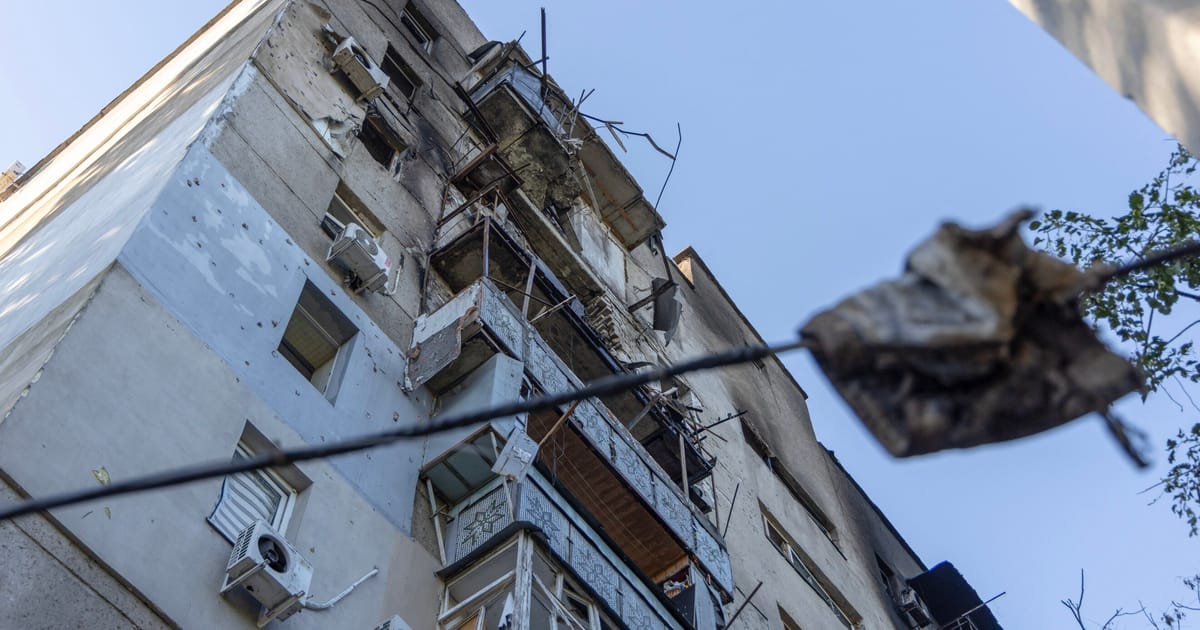

Today’s global landscape finds itself marred by turbulent developments in regions long familiar with conflict. With a profound sense of urgency yet maintaining a deliberate calm, we explore the headlines from Ukraine, Gaza, and Syria, unraveling the layers of current events without losing sight of the individuals and communities at their core.
In Ukraine, a significant escalation unfolded as Russia launched a massive drone and missile attack targeting multiple cities, including Odessa and the strategic hub of Pavlohrad. The recent wave of strikes is marked by complexity in its scope, with Ukrainian President Volodymyr Zelenskyy reporting over 300 drones and 30 missiles utilized in this offensive. Interestingly, these strikes swept across the country but notably left the heart of Kyiv relatively unscathed, suggesting strategic, albeit devastating, target choices aimed at crippling infrastructure and community resilience.
Particularly in Pavlohrad, this offensive orchestrated the heaviest attack the city has faced to date. Within six hours, a tapestry of destruction affected vital city elements, from industrial facilities to emergency services, altering the urban landscape in a manner that defines more than just physical space but collective security and morale. While the full impact of these assaults continues to unfurl, authorities, led by regional head Sergey Lysak, are engaging robustly in recovery and mitigation. The resilience of the people, coupled with international support and watchful solidarity, illuminates a path forward amid the clouds of uncertainty.
Simultaneously, another humanitarian crisis looms large in Gaza, where over 32 Palestinians, many of them reported to be young men, faced tragic ends as Israeli troops discharged gunfire near aid distribution centers. These centers, orchestrated by the Gaza Humanitarian Foundation, serve as lifelines amid the ongoing strife for the local population. Witnesses claiming an indiscriminate pattern of violence accentuates the multiplicity of challenges faced by civilians trapped in cycles of conflict and survival. This incident, moreover, reverberates beyond the immediate, instigating a broader dialogue on humanitarian access and the imperatives for peace sustained by the value of every human life.
For these two different yet inherently linked territories, geopolitical currents intensify the already dense atmosphere. As nuturing peace remains an elusive and challenging endeavor, connecting global actors underline that positive diplomatic engagements are vital to ushering a cessation of hostilities and an enduring ceasefire plan.
Meanwhile, the evolving situation in Syria presents another dimension of regional instability, intensified following the recent fall of Bashar al-Assad’s regime. Sectarian divisions surface anew, spotlighting tensions between diverse communities such as the Bedouins and the Druze. Within this fragile context, clashes have stirred Syrian government forces into action, and Israeli airstrikes have exacerbated the precariousness of the moment. These developments underscore the opportunistic complexities arising from leadership vacuums which transform agendas towards humanitarian resilience.
The cycles described here invite us to reflect not only on immediate political dynamics but on sustained impacts entwined with the human condition. Across Ukraine, Gaza, and Syria, conflict does not define these places; instead, it is the resolve of communities, the yearning for peace, and the efforts towards stability, made visible that delineate hope from harrowing narratives.
In this challenging climate, international efforts, dialogue, and a persistent commitment to human rights underpin the enduring quest for peace. As observers at a physical and emotional distance, our roles evolve into both witnesses and advocates, extending empathy and engaging with avenues for transformative change. Through mindful discourse and concerted actions, the international community strives ever forward towards a vision where coexistence flourishes, shaped by the guiding principles of understanding and shared humanity.
Source: {link}
